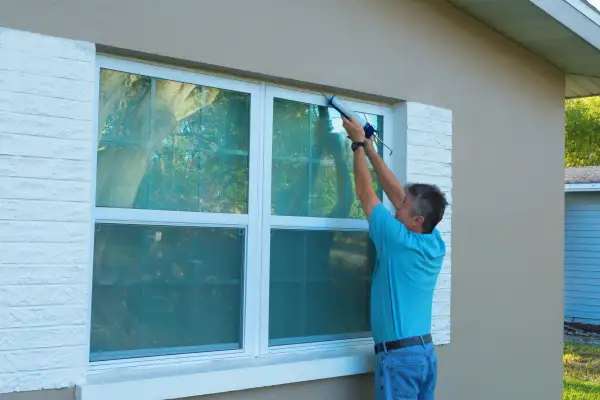Home Insurance Rates Are Rising Due to Climate Change: Here's How to Lower Your Costs

Last year’s disastrous weather could spell higher premiums for home insurance in 2022. Yet a few climate-related moves taken now may help limit your odds of a rate hike this year, as well as improve the experience of making a claim on your policy after a “weather event.”
The high cost of settling claims for 2021's eighteen major weather disasters – each of which exceeded $1 billion in damages – are among the reasons a hike in your home insurance premiums is likely this year, experts say. And research suggests 2022 may bring more of the same – for example, an August 2021 United Nations report in the years ahead forecasts more intense rainfall and continued sea-level rises, with associated flooding. Non-weather factors, such as higher costs to repair and replace homes, are also putting upward pressure on premiums.
"I don't think this is an era where prices are going to go down,” says Robb Lanham, chief sales officer for HUB International Personal Insurance. Rather, he says, it's an ideal environment "for an insurance company to say, ‘For us to be a viable company, we have to raise our rates.’”
It’s smart to ask your insurance company or agent about a possible rise in your rate in 2022, Lanham says, and what may be behind any hike. If weather risk is among the factors, these three moves may help to at least hold the line on your insurance bills, as well as better prepare you to collect quickly on a claim for weather damage.
Spend to weatherproof your property
In many cases, investing in weatherproofing your home to mitigate damage can pay off in the form of a lower premium, or at least a lower increase in 2022.
“Many of the large carriers offer discounts for a number of mitigation factors,” Lajdziak says, including those related to weather damage.
New windows that better protect your home might be a good long-term investment, especially in areas where hurricanes are common and insurance discounts frequent. “New windows may cost you $10,000, but could save you $2,000 annually” in premiums, Lanham says.
Homeowners in drought-stricken areas exposed to wildfire risk should “harden” their structures and properties by using materials and building designs that are less likely to catch and spread fire. While this can help lower homeowners insurance costs, it of course also reduces the risk of wildfire damage to a home in the first place.
Some high-net-worth homeowners in fire zones have gone so far as to install “sprinkler” systems that spray structures with firefighting foam to retard flames. In other cases, the fix might be as simple as landscaping. For instance, insurers flag more-flammable Italian cypress trees and wood mulch as factors that can contribute to higher premiums.
If you have flood insurance, or are considering getting a policy, another damage-mitigation – and insurance savings – strategy is to elevate a low-lying property to limit possible flood damage.
Check your policy renewal for climate-driven coverage adjustments
As if the prospect of higher premiums isn’t bad enough, Lanham says there’s a rising risk of your coverage being quietly adjusted in ways that might leave you shorter than you anticipated after a weather-related claim.
The industry, he says, is increasingly beginning to offer “more stripped down policies." And that, he says, is creating "more and more people who aren't fully aware of what exclusions or changes may have been made from last year." The result could be policy changes – such as adjustments in deductibles for wind damage from hurricanes – that could affect the size or success of an insurance settlement.
Such weather deductibles merit attention even if your policy isn’t changing, because they differ from the standard $500 or $1,000 figure that applies when you claim for other perils. In coastal areas, policies might have a separate, higher deductible for named storms. In some cases, he says, the deductible isn’t a flat dollar amount but a percentage — sometimes as high as 5% — of the cost of the entire insured value of the property. “It could be a significant deductible if it’s a named storm,” he says.
In addition, it’s important to understand how water damage is and isn’t covered under your homeowners policy, since it’s a common area of confusion, according to professionals. In short, you’re covered for water that enters your home directly, as when rain falls through a broken window. But if the water touches the ground before it reaches your home, you’ll need flood insurance to be covered for the resulting damage.
Take advantage of more fast-claims options
Repeated occurrences of severe weather have prompted insurers to invest in technology to make the claims process easier — for you as well as them — and more efficient.
These “DIY” tools are being rolled out to streamline both home and auto insurance claims, and they really do help expedite the process: One recent study found that 60% of claims submitted online are processed within a week, compared to less than half that are initiated by phone. In some cases, you can even receive claim payments electronically.
Many of these tools may be built into the insurer’s mobile app. (Most major carriers these days have smartphone apps.) After an event, the owner or policyholder can take and upload photos of the damage and submit it. This speeds up the process, whereas having a claims adjuster physically go out and inspect damage can be incredibly time-consuming, particularly in the case of widespread natural disasters that damage many homes at once, and may make access challenging or impossible for a period of time.
More from Money:
Best Homeowners Insurance Companies of 2021
[TK: link to climate/oinsurance story #1]
Why You Should Consider Flood Insurance Even if You Don’t Live in a Flood Zone

